Original URL: https://www.theregister.com/2008/12/13/tob_computer_space/
Before Pong, there was Computer Space
Surrender your quarters, human!
Posted in Bootnotes, 13th December 2008 01:29 GMT
This Old Box The holiday spirit is still strong with This Old Box — or rather, the nog we're drinking this evening has some pretty strong spirits in it. Just semantics really.
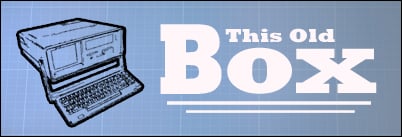
But as the shopping days until C-day dwindle, there's computer games on many-a-reader's mind. And with Atari's latest resurrection in swing, we can't help but dedicate this edition to a little gaming history.
Without further ado, we dive into the first video game system ever to get a job:
Computer Space
Released: 1971
Price: unknown
CPU: none
Memory: none
Display: Modified 15" General Electric vacuum tube television set
Special Features: Few sharp corners to cut yourself on.
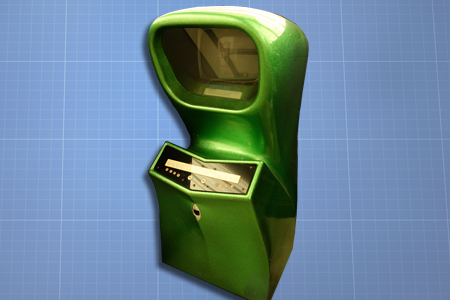
Pong often gets credit for being the first commercially sold video game, but the honor truly belongs to Computer Space, created in 1971 by Nolan Bushnell and Ted Dabney who would both later found Atari.
Before there was arcade centers (much less home consoles) to expose the public to video games, the first true commercial obstacle the video game industry had to overcome was convincing drunks to part with their quarters. Despite novel technology and an eye-catching cabinet design, Computer Space was, for its time, too foreign a concept and difficult to control to become a success in the bars it was pitched to.
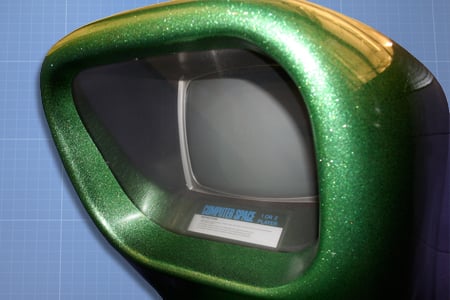
It was only later when Bushnell and Dabney moved to selling a simple paddle-ball game anyone could play did the video game industry blossom into the paycheck-stealing monster it is today.
Spacewar!
At the University of Utah's electrical engineering program in the 1960s, Bushnell had the opportunity to play Spacewar!, one of the earliest-known computer games, on DEC mainframe computers. Pioneering one of the video game industry's most treasured tactics, Bushnell decided to develop a knock-off of the game to earn some cash. The same idea was also implemented two months earlier than Computer Space's debut at Standford University with Galaxy Game, although it was limited to only one unit at the Tresidder Union.
Teaming with Dabney, the duo formed the company Syzygy to make Computer Space. While working on the prototype, the two fixed broken pinball machines to fund the project. Syzygy eventually struck up a deal with Nutting Associates, a Mountain View, California-based maker of coin-operated trivia and shooting games to fund the venture and construct the fiberglass cabinet that housed the system.
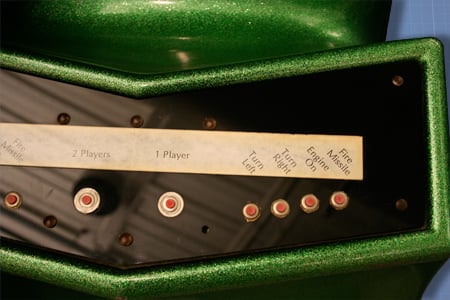
Although Computer Space wasn't a commercial success (Nutting produced about 1,500 units), the game was ground-breaking in many ways. The cabinet and control scheme became a template for future arcade machines (although the curvy design was quickly scrapped in favor of the rectangular cabinets common today). The machinery in Computer Space was also widely adopted in arcade machines until microprocessors became affordable and more readily available.
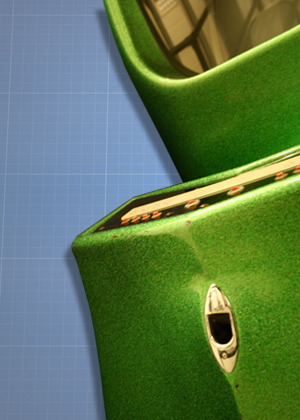
Computer Space doesn't have a CPU chip or even system memory, but rather is a solid state computer running on Transistor to Transistor Logic 74xx series chips. The monitor was a standard black and white General Electric vacuum tube television set housed inside the fiberglass shell.
A player controls a rocket ship pitted against flying saucers with a masochistic-level of accuracy with their missiles. The skillful rocket ship commander that manages to score more hits than the saucers by the end of the game's one to two-and-a-half minute playtime goes into a extended play "hyperspace" mode, where the screen color reverses to white.
Metaflakes
The Computer Space cabinet came in a variety of colors, metalflake red, metalflake blue, metalflake green, and a non-metalflake yellow. The game was most commonly sold as a single-player unit, although a few two-player units were developed and sold as well. Computer Space's cabinet was indeed quite modern looking — some say attractive, although that's certainly in the eye of the beholder. This author happens to think it's a bit like playing a game in the hollowed-out head of ET.
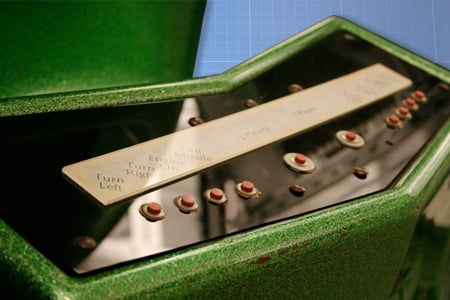
Nevertheless, its sleek and futuristic design won it cameo appearances in the 1973 movie Soylent Green and later Jaws in 1975 (technically making it one of the first product placements in a Hollywood blockbuster, although sales were for all intents and purposes dead by that time).
Computer Space was ultimately a commercial flop. Some blame its difficulty, some blame there not being a video game market established yet. Bushnell felt that Nutting Associates didn't market the game well.
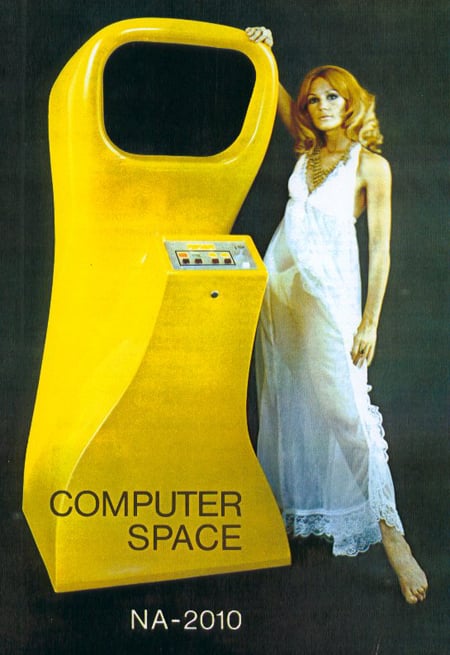
Given the lovely model's underwear being clearly visible in the above Computer Space ad, we here at El Reg are inclined to disagree. Strongly.
Although since the unit's height measures about 5.58 feet (1.70 meters) there's probably something funny going on with scale.
Bushnell reportedly only made $250 from Computer Space royalties. But despite the lack commercial success, Bushnell and Dabney decided to give the biz another go — this time as the sole designer and manufacturer of their games.
The two changed the name of their company to The Atari Company on June 27, 1972. Their new strategy was also better suited to the intended audience. Make a game that any drunk in a bar could play.
That game would become Pong. And if you don't know about Pong, you should paddle yourself.
As always, our thanks to the Computer History Museum in Mountain View, California for letting us spotlight some of terrific systems. We also recommend to those interested in further reading on Computer Space head over to Computerspacefan.com. ®